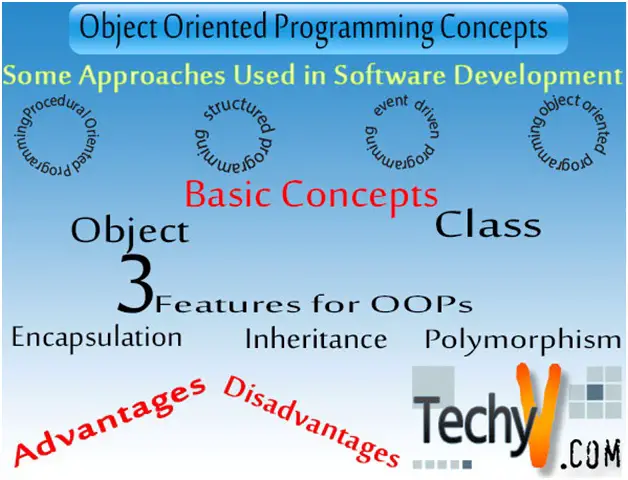SQL-related Stored Procedures (SP)
Normally, a stored procedure is said to be an independent module of programming instructions accessible to submissions getting into a ‘relational’ DB scheme. Stored procedures, which are also known as sproc, proc, StoPro, SP or StoredProc, are retained in the data dictionary of your database.

Typical uses for stored procedures include data authentication, which is incorporated into the DB or get access to command mechanisms. Besides, stored procedures are utilized to consolidate and centralize logic, which was initially applied in the applications. Widespread or complex processing, which needs implementation of some SQL statements, is shifted into stored procedures, and all applications call the procedures. You can simply employ residual stored procedures while implementing single stored procedure from within another. These procedures are alike to the “User-Defined Functions – UDFs”.
The major distinction is that the user-defined functions are utilizable like any other expression in the SQL statements, whereas, the stored procedures should always be invoked utilizing the “CALL” statement.
Call or Executive Procedures founded on SQL
Stored procedures may return result sets, for instance, the results of a ‘SELECT’ declaration. These kinds of result sets can be dealt with the utilization of cursors, not only by the other stored procedures, but also by linking a result set locator, and/or by the apps.
These procedures may furthermore comprise of declared variables for the processing of data and cursors, which permit it to loop via more than one line in a table. Stored procedure languages includes CASE, IF, LOOP, REPEAT and WHILE statements along with many others. They can also obtain variables, return results or change and retrieve them, counting on where and how the variable is acknowledged.
Execution of SQL-based Stored Procedures
The accurate execution of stored procedures differs from one stored procedure to the other. Many of the database vendors support them in some form. Similarly, depending upon the db scheme, these procedures can be applied in a kind of programming languages, not only for C, but also for C++, demonstration SQL and/or Java. The procedures written in ‘non-SQL programming’ languages may or may not implement SQL declarations themselves.
The expanding acceptance of stored procedures directed to the introduction of procedural components to the SQL language in the SQL–1999 and 2003 standards in the part PSM or SQL. It has made SQL a very important programming language. Many of the database systems present vendor- and proprietary-specific additions, exceeding SQL or PSM.
DB Schemes and Their Execution Languages
For better understanding of these stored procedures, you should rather follow these pointers on the basis of DB system and Execution Language:
If the DB scheme is ‘MS SQL Server,’ the execution languages will be ‘Transact-SQL’ and diverse .NET Framework.
If the DB Scheme is ‘Oracle,’ the execution languages will be ‘PL/SQL’ or ‘Java.’
If the DB Scheme is ‘DB2,’ the execution languages will be ‘SQL/PL’ or ‘Java.’
If the DB Scheme is ‘Informix,’ the execution languages will be ‘SPL.’
If the DB Scheme is ‘postgreSQL,’ the execution languages will be ‘PL/pgSOL.’ They can furthermore employ individual role dialects, for example, ‘pl/php’ or ‘pl/perl.’
If the DB Scheme is ‘Firebird,’ the execution languages will be ‘PSPL, which is also known as Fyracle and it, furthermore carries fractions of PL/SQL of Oracle.’
Where Can You Employ SQL-based Stored Procedures?
In various schemes, stored procedures can be utilized to command transaction management. In other ones, they run inside a transaction such that transactions are effectively transparent to them. They can furthermore be invoked from a db trigger or a condition handler. In order to demonstrate, these procedures can possibly be triggered by an insert on a specific table, or update of a specific field in the table and the code in those procedures will be implemented.
Apart from this, writing stored procedures as condition handler furthermore permits db managers to track mistakes in the system with greater detail by utilizing them to apprehend mistakes and keep track of some review data in the database or an external resource, such as a “file”.
SQL-based Stored Procedures VS dynamic SQL
As the stored procedure statements are retained exactly in the db, they may remove whole or fraction of the compilation overhead that is normally needed in positions where software applications send inline dynamic SQL queries to the database. Also, many of the db systems apply ‘statement caches’ or some other means to avoid repetitive compilation of dynamic SQL statements.
Furthermore, at the same time as they bypass some overhead, pre-collected SQL statements add to the complexity of creating a favorable execution plan, because not all the arguments of a SQL statement are provided at compile time. On the basis of exact db configuration and execution, mixed performance results will be produced from stored procedures against general queries or user defined functions.
Following are few pointers that can simply define comparison between dynamic SQL and Stored Procedures:
They’re useful for the avoidance of network traffic.
They’re useful in terms of encapsulation of the enterprise logic.
They’re helpful when it comes to the delegation of access-rights.
They provide some defense from SQL injection attacks.
SQL-based Stored Procedures VS dynamic SQL in Terms of Functionality
A function or operation is a subprogram in writing to present certain computations and return a single value.
Functions should return a value by utilizing a keyword, ‘RETURN’, but it’s not mandatory for the stored procedures.
Stored methods can employ keyword, ‘RETURN’, but without any value being passed.
Functions can also be utilized in ‘SELECT’ statements, provided they do not manipulate data. Procedures will not be included in ‘SELECT’ statements.
You will find a function with only ‘IN’ parameters, at the same time as stored procedures will have ‘OUT’ or ‘INOUT’ parameters.
A stored procedure can return more than one values utilizing the ‘OUT’ parameter or return no value at all.


















